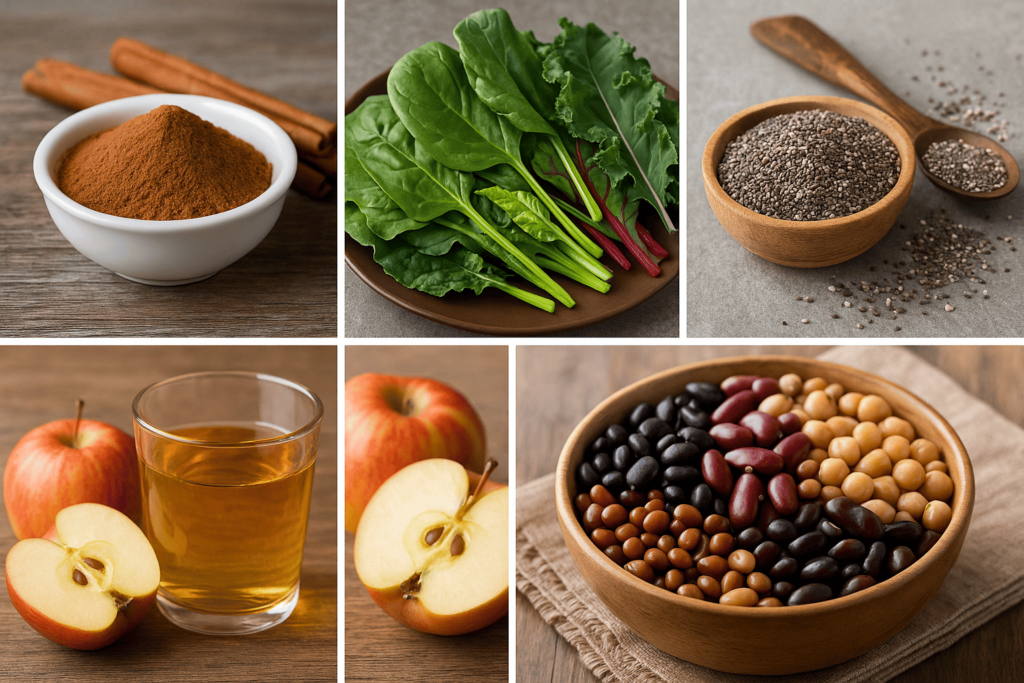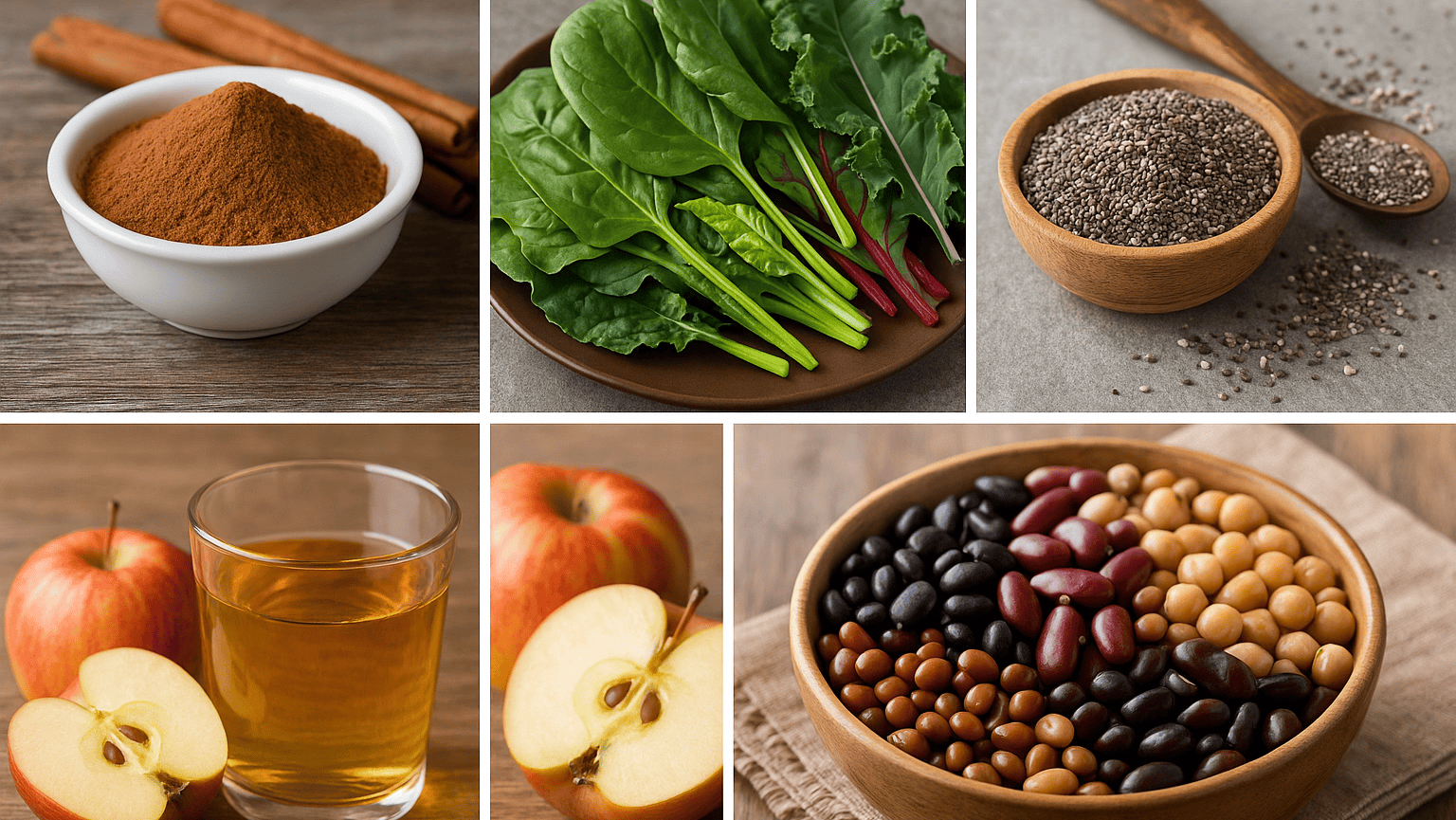Diabetes is a fast-growing health issue in India, with millions of people being diagnosed each year. While medicines and lifestyle changes are essential for managing the condition, many aren’t aware that a few common ingredients found in Indian kitchens can actually aid the body in reversing type 2 diabetes naturally. A wholesome diet, full of natural, nutrient-rich foods, can serve as a strong foundation for better health—and might even help reduce reliance on medications.

1 – Cinnamon (Dalchini): A Fragrant Spice with Metabolic Power
Dalchini, or cinnamon, is a common ingredient in Indian kitchens—used in everything from masalas to desserts. But beyond its sweet aroma and warming flavor, cinnamon offers significant health benefits, especially for blood sugar control. Research has shown that cinnamon can improve insulin sensitivity, allowing your body to process glucose more efficiently. It also slows down the rate at which sugar enters the bloodstream after a meal, helping to avoid sudden spikes. How to use it the Indian way:
- Mix half a teaspoon into your morning chai or warm milk for a cozy start to the day.
- Add to atta while preparing rotis or parathas to subtly infuse flavor and benefit.
- Sprinkle a dash on sliced fruits like bananas, guavas, or apples for a sweet-spicy snack.
2 – Green Leafy Vegetables: Local, Seasonal, and Full of Benefits
India is blessed with an abundance of green leafy vegetables—palak (spinach), methi (fenugreek leaves), sarson (mustard greens), and amaranth (chaulai), to name a few. These are rich sources of fiber, magnesium, and antioxidants, all of which play a vital role in balancing blood sugar levels.
- Fiber slows down digestion and helps avoid post-meal glucose surges.
- Magnesium supports insulin regulation, especially beneficial for people with type 2 diabetes.
- Antioxidants protect cells from inflammation and oxidative stress, which are both linked to insulin resistance.
3- Chia Seeds (or Sabja Seeds): Tiny Ingredients, Huge Impact
Chia seeds have gained popularity in Indian health circles for their incredible ability to absorb water and form a gel-like texture. This slows down digestion, helping to regulate how sugar is released into the bloodstream. Sabja seeds—basil seeds traditionally used in Indian drinks—offer similar benefits and are naturally cooling.
Nutritional highlights:
- Packed with soluble fiber, which supports smoother digestion.
- A rich plant-based source of omega-3 fatty acids, which reduce inflammation.
- Promote satiety, which helps control cravings and overeating.
Ways to enjoy them:
- Add to curd, porridge, or overnight oats for a nutrient-dense breakfast.
- Make chia pudding with coconut milk, almond milk, or even dairy milk with spices like cardamom.
- Use sabja seeds in nimbu pani or falooda for a refreshing, traditional twist.
4 – Apple Cider Vinegar: A Simple Habit with Big Results
Apple cider vinegar (ACV) may not be a traditional Indian ingredient, but it has become widely available and is gaining popularity for its health benefits. Studies suggest that taking ACV before meals—especially ones rich in carbohydrates like rice or rotis—can reduce blood sugar spikes and improve insulin response. Best practices for using ACV:
- Dilute 1 tablespoon in a glass of water and drink it before meals.
- Use it in salad dressings with olive oil, lemon juice, and Indian herbs like mint or coriander.
- Never consume it undiluted, as it is highly acidic and can irritate your throat and stomach lining. Even this small step, when taken consistently, can have measurable effects on blood sugar regulation.
5 – Pulses and Legumes: India’s Affordable Superfoods
Dal-chawal is a staple across Indian households—and for good reason. Pulses such as moong dal, masoor, rajma (kidney beans), chana (chickpeas), and toor are not just affordable and easy to store, they’re ideal for controlling blood sugar. These foods digest slowly due to their high fiber and protein content, which ensures a steady release of glucose rather than sudden surges. They also promote satiety, keeping hunger at bay for longer periods. Why they work:
- Rich in resistant starch, which slows digestion and stabilizes blood sugar.
- Feed the good bacteria in your gut, improving overall digestive health.
- Incredibly versatile and economical—perfect for daily cooking.
Ideas to include them:
- Make classic dishes like khichdi, sambhar, or sprouted moong chaat.
- Shape into tikkis using boiled chana or rajma.
- Pair with whole grains like brown rice, millet (bajra, ragi), or quinoa instead of white rice.
In Summary : Managing blood sugar naturally doesn’t mean giving up on taste or tradition. In fact, by tapping into Indian kitchen staples like cinnamon, leafy greens, pulses, and even age-old cooling agents like sabja, you can create a diet that’s both healthful and deeply rooted in culture.
